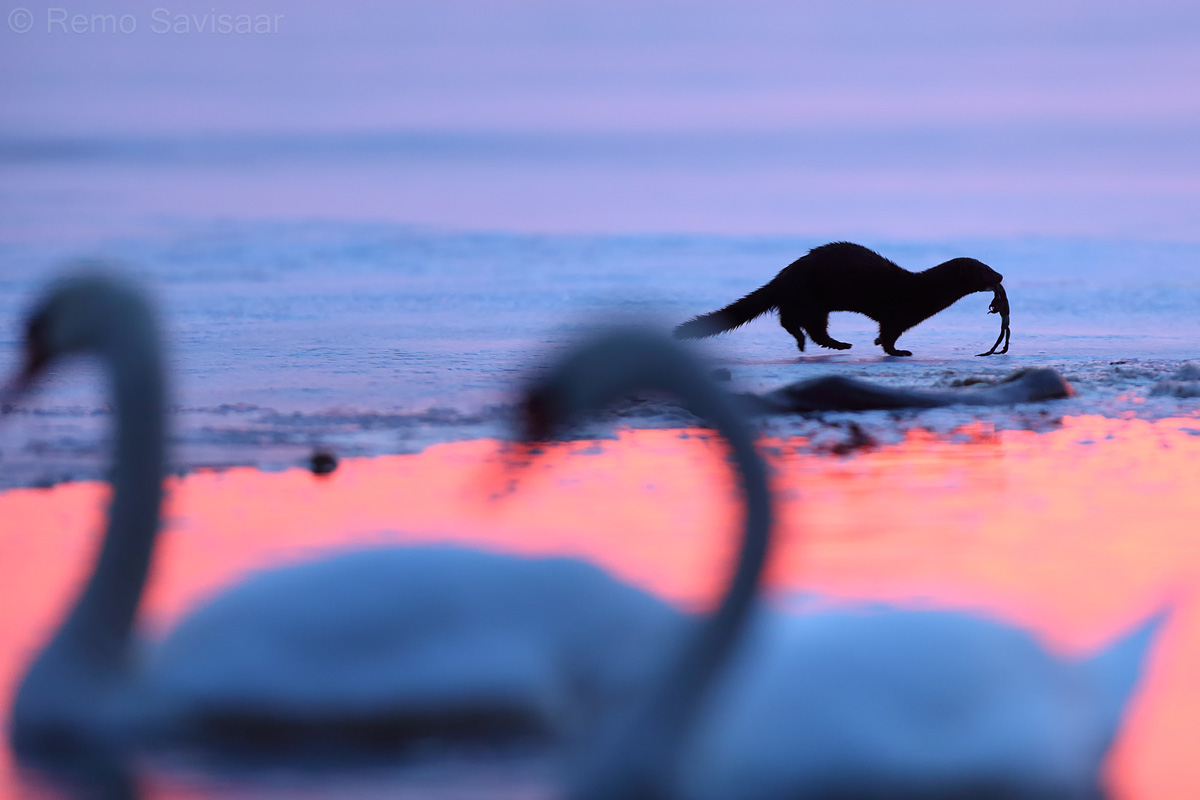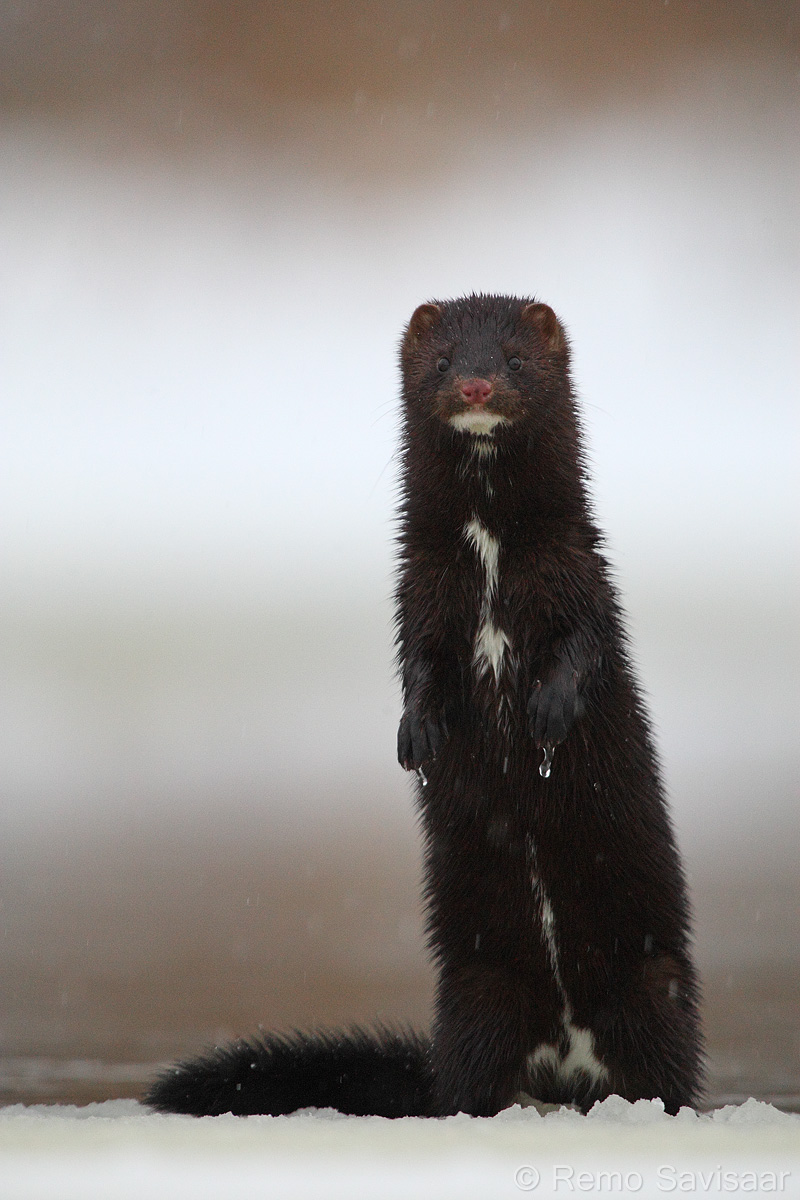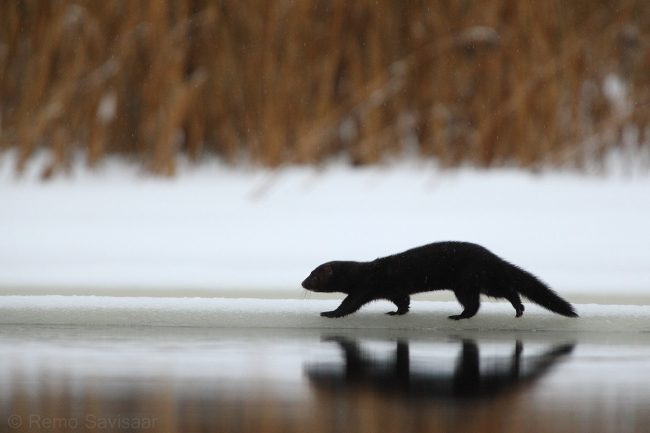Moving along beaver paths you may also meet other semi-aquatic animals. Most frequently the American mink can be seen.
Posted by the Animal of the Year Team 23.02.2019
Compared to the beaver the mink is a quite small creature. A nature observer novice may even wonder whether they see an otter or a mink. The mink is small, body length stops at 30-

Photo: Remo Savisaar
The mink is a foreign species in Estonian nature that was brought to

Photo: Remo Savisaar
Minks lead a solitary life and are generally active at night but they may also be out in daytime. Basically they live near water bodies, fresh water as well as seawater, with rocks and plenty of sheltering opportunities. The mink is not primarily a den digger but sleeps under tree roots, in old beaver dens, in hollow tree trunks, under boats etc. In search of food they may move some kilometres away from the water. Their heat period is from the end of February until April – now they can be observed when the animals are more active in daytime too. The mink can be quite curious and sometimes even brave. It may for instance approach to observe a fisherman quietly waiting on the bank and can even try to snatch a fish from the latter.

Photo: Remo Savisaar
The animal that is so very similar to the American mink is the European mink – our native species. Regrettably the American mink has driven off our mink from nature. The European mink can only be seen in Hiiumaa where they have been set out repeatedly in order to re-establish the population. The European mink resembles the American mink and the polecat. The lower lip of the American mink is white; the European mink also has a white upper part of the snout which is a good identification characteristic. The European mink lacks the facial mask of the polecat, and it is smaller than the polecat and the American mink.
Remo Savisaar



